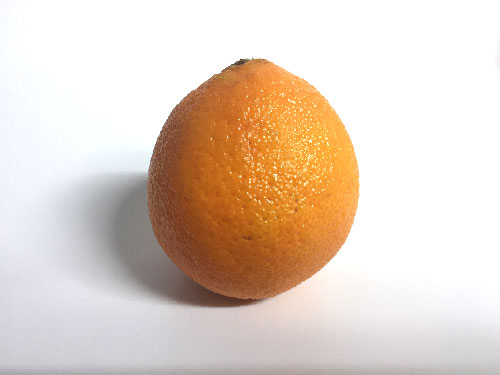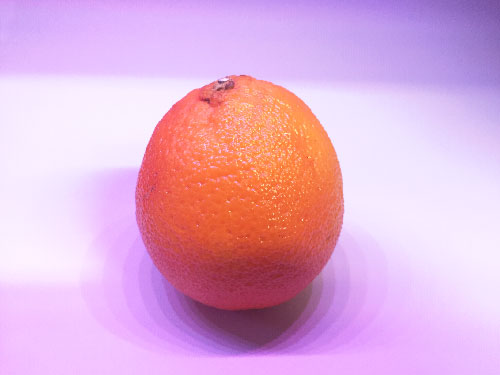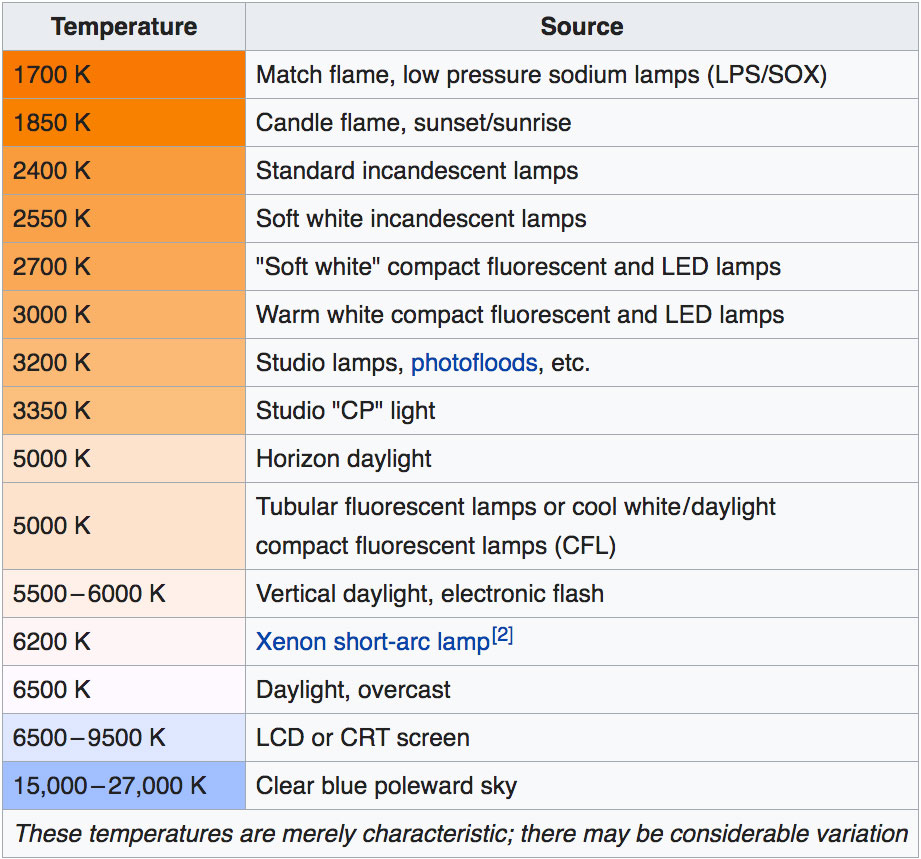Did you know that the color temperature of a light source can dramatically affect your photographic prints? Understanding color temperature for prints lighting can help you bring out the best in fine art prints. Conversely, using the wrong color temperature when illuminating photo prints can negatively affect the final look. In this post I will explain what color temperature is and how to take advantage of it when lighting prints.
Any art collector, or fine art photography owner, will benefit from understanding color temperature of a light source. It can literally pull out the vibrant colors of a fine art photo print, or change them in unpleasant ways. The reason for this is that color objects shift their tones when lighted with particular light sources. Furthermore, the result is the same on photo prints, paintings, or any object of color.
I learned this the hard way when looking at one of my landscape photography prints for the very first time. This happened some years ago, when I printed one of my new nature images. When the print was delivered, I could not wait to get it out of the box and see it. To my disappointment, it looked very differently from what I had expected. The color tones were all wrong and not what I had intended in this fine art nature photography print. I could not understand how that could be and was quite perplexed. However, everything changed when I decided to view the art piece under a different light source. It made all the difference because the first light, under which I examined the print, had the wrong color temperature. However, the second did and as soon as it lit the photo print all the colors became alive in their accurate tones.
Simply put, light sources emit light and their light will appear cooler or warmer, depending on the light temperature. Therefore, a light with cooler temperature will appear more blueish, whereas warmer temperature light will be more yellowish. Webster’s definition of color temperature is: “the temperature at which a blackbody emits radiant energy competent to evoke a color the same as that evoked by radiant energy from a given source (such as a lamp)”. To be clear, color temperature has nothing to do with what your body may feel, and it has everything to do with what your eyes and brain will perceive. In addition, white balance in a camera works very similarly to how color temperature of light affects illuminated objects.
You may not know this but color temperature affects how you select the paint color of a wall, before painting. Have you ever painted a wall in your home? If so, have you ever gotten advice on how to pick the right wall color? Consider this quote from a color expert – “You need to test the color in areas of shadow and direct light, and observe it during the day and evening, when you switch to artificial light, to get a real sense of whether it’s right for you”. Sound familiar? Why is this advice given to so many people who want to have their interior walls painted? It is because of the effects of color temperature. Natural daylight has a color temperature of about 6500° K (I explain this in detail below), and your home light bulbs usually have a different color temperature. For this reason, your wall color appears different during the day and in the evening, when the lights are on.
Below is the easiest way I can demonstrate how light color temperature affects the colors of an object. Although the primary purpose of this post is to describe the affects of color temperature on fine art photography prints, the effect is the same on any object of color. Therefore I will start by a simple demonstration and will then move to some fine art nature photography examples. This first example below uses a normal clementine. I used the exact same fruit in both photographs. The images were shot about 1 foot apart from each other. The first one was shot on the kitchen counter, where the light illuminating the object is a fluorescent ceiling light. The second was shot underneath the kitchen cabinet, where the light source is an under-mounted LED light. I did not check the exact color temperature values of these lights, but the difference is unmistakeable.


Notice how in the first image the background seems like a pure white. Also, the clementine color is a yellowish orange, and very natural in appearance. In comparison, the second image has a purple looking background. In addition, the clementine color is a lot more saturated orange, with a reddish tone. This image looks very unnatural and that is how both the clementine and the background looked to my eye. Needless to say, I used a clean white background sheet in both cases.
The standard unit of measuring color temperature is Kelvin (K). The table below (referenced from Wikipedia) gives you an idea of the different color temperatures and light sources that are common to the specified range. Notice that the color temperature scale is in reverse order, compared to normal temperature values. In other words, a higher number in color temperature equates to cooler, not warmer.

Color temperature of a light source can and will affect the color appearance of fine art photography prints. While the goal of lighting is illuminating the fine art, improper illumination will alter the appearance of the photographic print.
Let us take a look at a three simulated examples, using Gintchin Fine Art nature photography images. Before we begin however, it is important to mention three things:
First, these are simulations to illustrate a point. However, from what I have seen in my experience, they represent what happens in real life very well. Also, keep in mind that depending on the strength of your light, the effects could be more or less noticeable.
Second, these simulations use temperatures closer to the opposite ends of the spectrum – roughly 1900° K and 7000° K. If you are considering light sources for photographic art prints, chances are you will be looking at a narrower scope. The reason for this is that most light bulb choices will range between 2700° K and 6500° K. Nevertheless, they can have as strong effects on your fine art prints as the examples below.
Third, your computer monitor can affect how the examples below appear for you. Not all computer monitors are equal. Depending on their color calibration what you see below may be different from how I see it on my screen.
This image has a mixture of colors – primarily green with some white. It was shot in the early evening, shortly after sunset.
The first image in the example is how it should look when properly illuminated.
The second image has warm color temperature applied. Notice how the green colors become more yellowish, and the whites appear with some magenta.
The third image has cool color temperature applied. Notice how the greens lose their warm, and the white aspen tree trunks appear bluish, instead of white.
This image consists of primarily warm colors – yellow and orange. The photograph was taken in mid day with an overcast sky.
The first image in the example is how it should look when properly illuminated.
The second image has warm color temperature applied. Notice how the leaves fall color becomes a more intense orange. While it may still appear pleasing to the eye, it loses the original gold yellow hue, which is closer to the real scene.
The third image has cool color temperature applied. While the aspen trunks still look good, the yellow and orange colors become very subdued and dull. In my mind this completely ruins the image as it tones down the main point of the picture i.e., the golden fall colors.
Examples 1 and 2 are fairly uniform in color tonality. Therefore, I wanted to demonstrate how color temperature affects an image with both warm and cool colors. This shot was taken at sunrise and includes both shaded and sunlit areas.
The first image in the example is how it should look when properly illuminated.
The second image has warm color temperature applied. Notice that the warm color areas look fairly unaffected. On the other hand, all the cool shaded areas completely lose the appeal of bluish looking snow.
The third image has cool color temperature applied. This time the sunlit areas lose some red saturation. However, what is affected even more are all the cool colors. They now look oversaturated and very unnatural.
While I will not recommend a magic Kelvin (K) number for color temperature, I will give some recommendations and considerations. It may be difficult to single out a temperature which will work perfectly in every interior, every fine at photography print, and every person. However, this section presents some suggestions and thoughts that should help you make the right choice. Use this information when selecting the light sources which will illuminate your fine art photo prints.
The purpose of illuminating photo prints is to bring out all of its details and color vibrancy that the photographer captured and intended. Shining just any light source at a photo print, does not mean its colors will be represented well. Nor does it mean that it will look natural or as the artist intended it.
An under-lit photo art print is like a wasted talent. For this reason people do not hang wall art in dark areas, without any illumination. Also, you are not likely to walk into a fine art gallery or a museum where the art is not illuminated at all. Good light enhances photographic fine art prints and brings out all of their colors and details in correct tones.
A useful piece of information is the research studies mentioned by Steven Weintraub. He reveals the results, which he and his colleagues discovered through studying how people perceive color temperature on wall art. In short, a group people were shown the same series of art paintings, under different color temperature light. He explains that the majority of people found the art to look most appealing under color temperature of 3700° K. Furthermore, the article references the 1941 research findings of Dutch researcher A.A. Kruithof. In this regard it says: “According to the Kruithof curve, an observer prefers lower color temperature lighting when the light level is lower, and prefers a higher color temperature when the light level is higher.”
Finally, consider Kyle Neuberger’s extensive experiment and conclusion that his personal choice for the best color temperature is 4000° K. His experiment ranged between 2700° K and 5000° K, and included three different photographs. One was an abstract image and the other two were nature photographs. In his words: “The winner is 4000° K. The biggest difference came in the pureness of the white time after time. It held it nicely while keeping the colors vibrant and separate from each other.”.
In addition to correct color temperature, high color rendering index (CRI) is also very important when lighting fine art photo prints. The index value of a light source indicates how accurately it can display the colors of the object it is illuminating. In our case that would be, how accurately would the photo print colors appear under illumination.
Light bulbs are usually rated for both color temperature and color rendering index. Therefore, when selecting light sources consider the CRI rating as well. The maximum CRI value is 100. For this reason, the higher the CRI value, the better the light source for lighting the prints.
If you are serious about properly lighting your photographic fine art prints you should carefully factor color temperature in your light source decisions. The correct color temperature can bring out the best in the photo wall art and make it look alive, vibrant, and real. Conversely, the wrong color temperature can almost ruin the look and feel of photography prints. It can make them look unnatural and give them an appearance far different from what the fine art photographer intended.
There is no magic number for color temperature, which works perfectly in all conditions. Remember that lower temperature like 2700° K enhances the reds, browns and oranges. Also, remember that higher temperature like 5000° K and above saturates the blues. Going to extreme temperatures, in either direction, will most likely result in an unpleasant look of the photo print.
My personal opinion is that when illuminating photographic art, the goal is to “wake up” all the colors in the image. The goal therefore, is not to enhance only certain color aspects (warm or cool colors). The reason is simple. If the photographer, who created the print, is serious about his/her artwork, it is safe to assume that a great deal of effort went into ensuring all the colors were rendered correctly on the final print. Given that, the goal of the illumination would be to reveal all of these colors brightly and accurately. For this reason, I believe a mid range option would serve well in most cases. What I mean is – selecting a light source between 3000° K and 4000° K, and a high CRI value.
Finally, if you find that a different color temperature value renders your photo print in a more pleasant way for you personally, you should consider that as well. After all, it is your art print to look at every day
Gintchin Fine Art offers exclusive limited edition fine art photography by Lazar Gintchin, a nature and landscape photographer specializing in large format size prints. Each image in Gintchin’s portfolio is a unique and limited edition print. The gallery includes high-quality wall art prints in acrylic and metal mediums, providing a luxurious fine art presentation. With a diverse range of genres to choose from, art enthusiasts can curate a collection that reflects their aesthetic preferences.